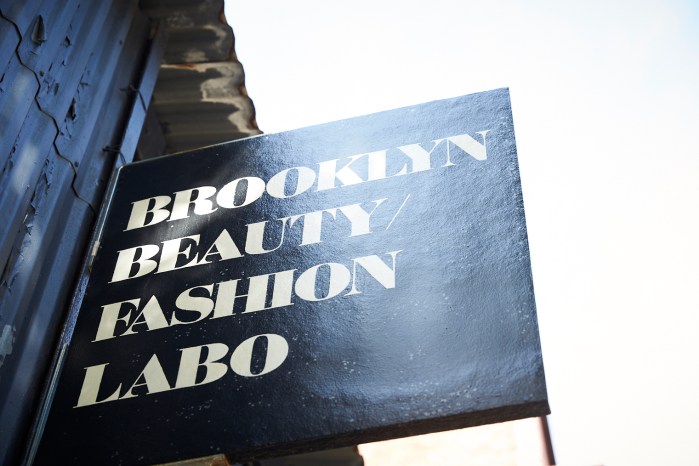Dozens of artists who for years worked out of a Park Slope loft building blasted officials for evicting them from their studios, accusing the city of jeopardizing their livelihood as a result of a corrupt Department of Buildings inspector whose behavior landed him a felony conviction.
The Buildings Department last month kicked the creatives out of the building where they labored since 2008, citing a bogus certificate of occupancy restricting the Slope lofts at 255 18th St. to residential use that inspector Artan Mujko issued in 2013, roughly three years before a judge in 2016 convicted him of felony bribery for ignoring code violations at a separate property.
And although agency leaders, who in February filed an appeal to revoke the 2013 occupancy certificate Mujko issued the Slope building, are aware the document they cited to kick the artists out was issued by a corrupt employee, they refuse to cut the crafty locals any slack, according to one creative, who said she felt victimized by the eviction.
“It felt like they were attacking us,” said Claudia Santiso, who used studio space in the
building since 2016.
The city also pointed out such issues as the building’s illegal heating system, poor ventilation, and combustible materials in evicting the artists, whom officials said are in “imminent” danger, according to Buildings Department spokeswoman Abigail Kunitz.
But the city did not force out the lofts’ residential tenants, who live with the same conditions — leading many to wonder how imminent any danger is, or if that warning is less perilous than the agency suggests, according to an attorney for the residents.
And the lawyer suggested the latter is true, noting that while there is plenty of work needed to improve safety conditions at the building, the city did not have to put the artists on the street in order to get it up to code.
“Whatever concerns there are about the safety of people, there are mitigating ways you can address those things, without just removing people from occupancy and eliminating their livelihoods, which is really a draconian approach to it,” said Michael Kozek.
A previous owner of the building between Fifth and Sixth avenues illegally converted the former warehouse into residential lofts in 2003, according to resident Stephen Paul, who opened Madarts Studios in the ground-floor and cellar of the property in 2008.
Paul’s studios provided a workplace for roughly 40 artists, as well as hundreds of students enrolled in classes with local arts educator Zipi’s Art Studio, he said.
The resident said he and his neighbors knew of the buildings’ pervasive problems throughout the years, but that they all took them in stride due to their amply sized units rented at what he called fair rates.
“Everybody was very uneasy living there, but they were empty spaces and big, and we made the most of it,” he said.
In 2013, a few tenants organized to register the property with the city’s Loft Board, a regulatory body that protects residents of illegally converted lofts, and puts pressure on landlords to fix any unsafe conditions, according to Kozek.
But before that application could go through, Mujko issued the 2013 certificate of occupancy — legally proclaiming the building up to code, when that couldn’t be further from the truth, according to Kozek, who claimed issues the Buildings Department recently evicted the artists for, such as shoddy heating and ventilation systems, plagued the building back then as well.
And there are other glaring irregularities noted in Mujko’s document that do not exist at the property.
For instance, the certificate of occupancy lists two ground-floor residential units in the building that the previous landlord never built, Kozek claimed.
“It’s a significant amount of work, and it was never done — there’s no way to dispute it,” he said.
Kozek has no proof any money changed hands between the property’s former landlord B H & C Realty Co. and Mujko, he admitted.
But the tenants’ attorney said the inspector’s felony-bribery conviction, coupled with the fact that the 2013 occupancy certificate he issued appears largely fraudulent, suggests that the document was likely a result of illicit dealing.
“It’s one of those situations of, where there’s smoke, there’s fire,” Kozek said.
The city’s Boards of Standards and Appeals is currently reviewing the Buildings Department’s appeal to revoke the 2013 occupancy certificate, according to the lawyer, who wrote to the agency urging its leaders to repeal the certificate in 2015.
Another landlord purchased the building in 2017, and the city delivered the recent partial-eviction notice to that firm.
But it’s the artists who claim they’re paying the harshest penalty, and those who haven’t already fled to new studio space said they are losing precious time and creative energy waiting for the Buildings Department to right what many claim is an unnecessary wrong.
“Right now I’m in limbo,” said Santiso. “This has been an unexpected financial burden, and finding another space I can move into is something I can’t do right now. What I’m losing is really a couple of months to be able to create work.”























